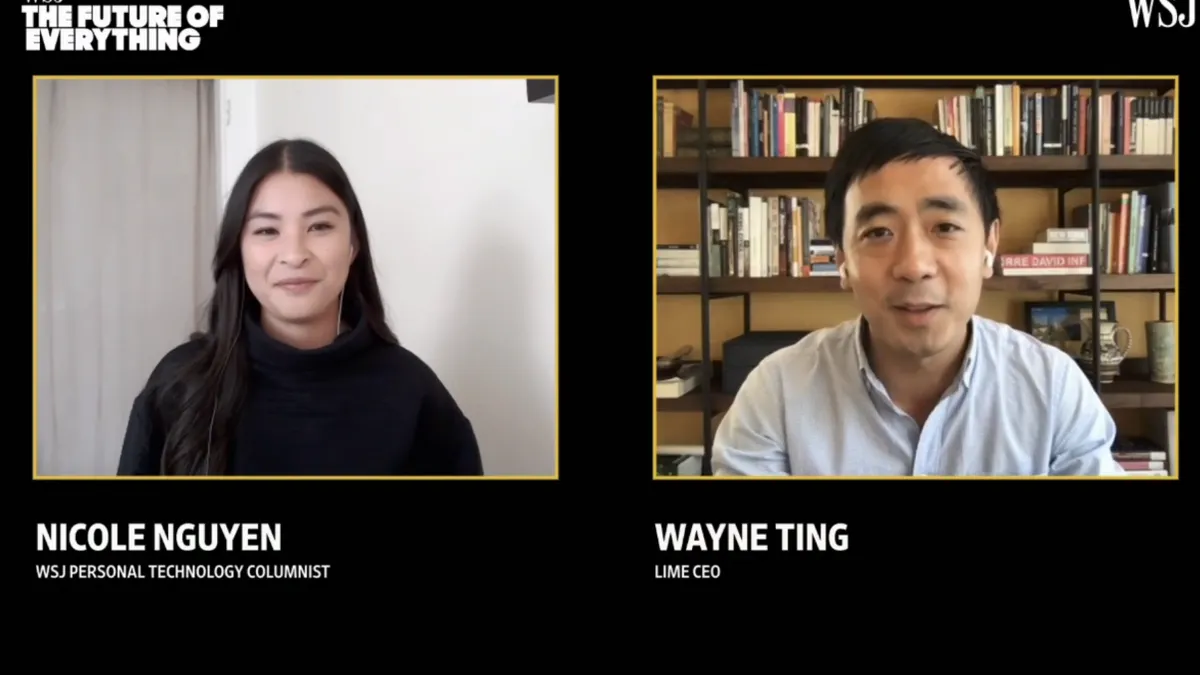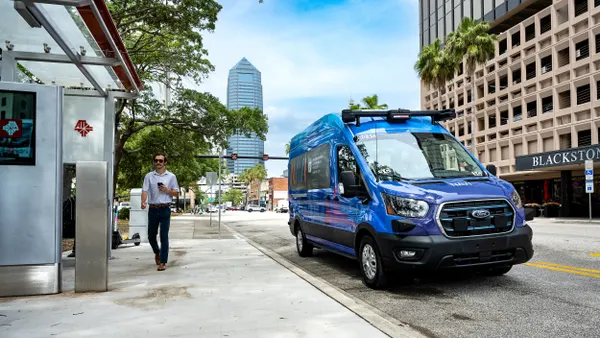Dive Brief:
- Lime has crossed the threshold of profitability for the first time after reaching a cash-flow positive third quarter, CEO Wayne Ting said in a virtual event hosted by the Wall Street Journal on Thursday.
- Lime saw a "massive decline in revenue" at the beginning of the coronavirus (COVID-19) pandemic amid a 95% drop in ridership, but "much of that revenue has come back," Ting said. In August, Lime hit EBIT (earnings before interest and taxes) positive, the "gold standard for profitability," and expects to be EBIT positive for the entirety of 2021, a Lime spokesperson said. Lime declined to provide Smart Cities Dive with specific profitability figures or data.
- Ting also announced that Lime's Gen4 model scooter will hit the streets of Paris this week. The new model is a "huge improvement on existing technology," Ting said, with a swappable battery, tech-and-ride technology, bigger wheels and other features.
Dive Insight:
Lime has teased the possibility of becoming profitable since at least November 2019, when the Wall Street Journal reported that investor skepticism from "cash burn, competition and regulatory challenges" led the company to double down on its profitability commitment.
Yet amid the onset of COVID-19 in March, the longevity of the shared scooter industry was all but certain. By March 19, Lime had suspended operations across 22 countries, including all of North America, as a public health effort. "Loving cities means protecting them too," said former CEO Brad Bao at the time, who now is chairman of the company's board.
Lime's scooter ridership was virtually depleted in the early days of the pandemic, but as city dwellers scrambled for ways to stay active in the summer months, ridership saw a slow return. London hit all-time ridership highs over the summer, a Lime spokesperson said, with similar highs occurring in Salt Lake City and other U.S. markets. And throughout it all, Lime's revenues adjusted accordingly.
"We saw a massive decline in revenue, but what's really incredible is how much of that revenue has come back, how broadly it's come back around the world," Ting said. "In fact, we're pretty sure that we're the first new transportation company ... to have ever delivered a full quarter profitability."
This claim is difficult to dispute as many leading micromobility companies, including Lime, do not disclose their quarterly earnings. "By everything we've seen from our competitors, no one meets the full mark of free cash flow positive or EBITDA positive," a Lime spokesperson said.
Bird did not respond to request for comment on its own profitability or on statements made during Ting's interview, such that Lime is "two or three times bigger than our nearest competitor." Ting also said it is "the only global player out there," which was later clarified to address that Bird does not have a presence in Asia or Australia and New Zealand.
Lime's focus on its global footprint was put in the spotlight this week with its European launch of Gen4. Lime said it is uncertain when the Gen4 will be rolled out in the U.S., but suggested it will likely be in late 2021. And by early 2021, Lime customers can expect to see a third micromobility mode join its fleets of bikes and scooters, Ting said.
He did not disclose what this third mode would be, but said it will serve longer distances and carry better cargo. "We want to make sure that it continues to appeal to different demographics that maybe don't see themselves on a scooter," Ting said. Lime teased in 2018 that it would expand into two-seater electric vehicles, similar to a Car2Go system that can assist with delivery services and the movement of goods, yet it is unclear if this is still of interest to the company.
Outside of new product launches, Lime is keeping its sights set on opportunities to continue leveraging its ridership upswing in new markets. In late October, the New York City Department of Transportation (NYCDOT) released the terms of the city's much-anticipated e-scooter pilot program, which sparked the attention of Lime, Bird, Spin, LINK and others who will vie for a spot in what is still the largest untapped U.S. market.











